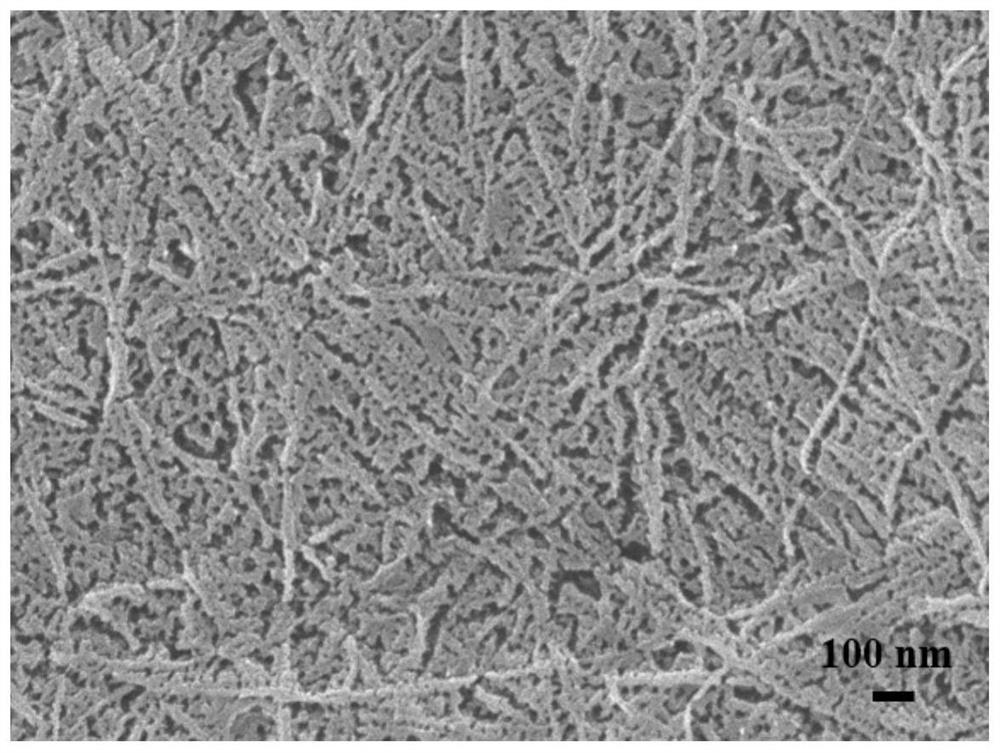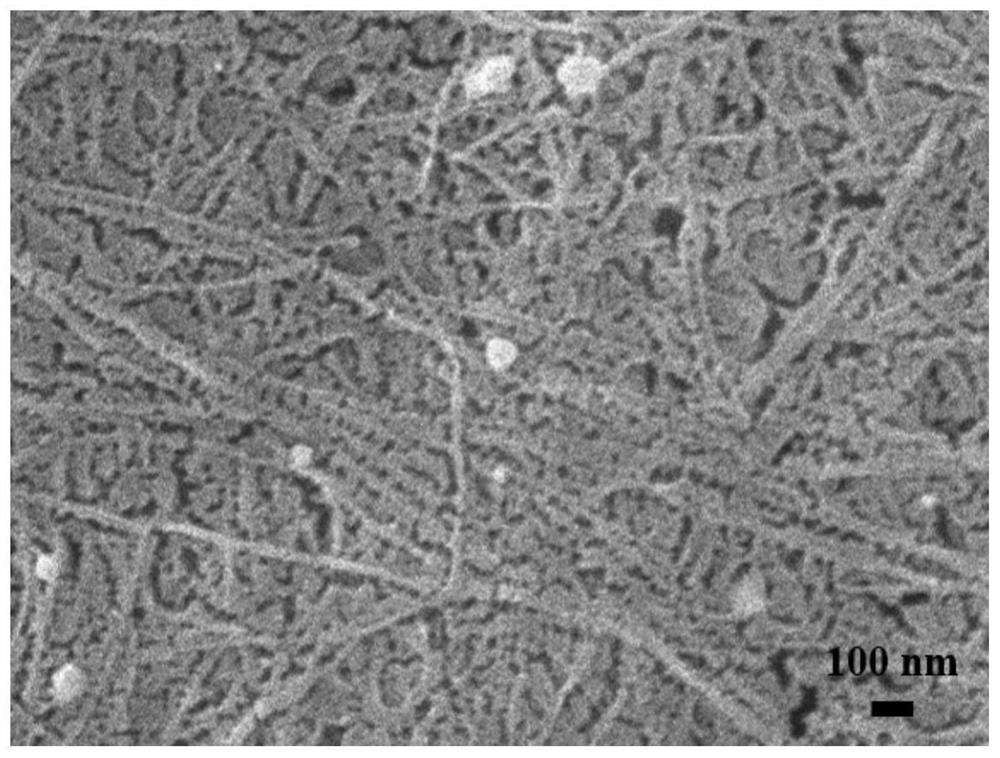A preparation method of palladium-cellulose membrane capable of simultaneous emulsion separation and dye degradation
A cellulose membrane and emulsion separation technology, applied in chemical instruments and methods, semi-permeable membrane separation, membranes, etc., can solve problems such as poor oil-water emulsion separation performance, easy aggregation of palladium nanoparticles, and rapid decline in membrane flux. To achieve the effect of abundant reserves, easy recycling and increased recycling
- Summary
- Abstract
- Description
- Claims
- Application Information
AI Technical Summary
Problems solved by technology
Method used
Image
Examples
specific Embodiment approach 1
[0028] Specific embodiment one: a kind of preparation method of the palladium-cellulose membrane that can synchronize emulsion separation and dyestuff degradation in this embodiment, it is carried out according to the following steps:
[0029] 1. Preparation of cellulose membrane:
[0030] sandwiching the support membrane in the separation device, then pouring the cellulose dispersion with a mass percentage of 0.5% to 2% onto the support membrane of the separation device, and suction filtering to obtain the cellulose membrane;
[0031] 2. Loaded palladium particles:
[0032] immersing the cellulose membrane in an aqueous palladium source solution, heating at a temperature of 45°C to 65°C for 5h to 6h, to obtain a cellulose membrane loaded with palladium particles;
[0033] The mass percentage of the palladium source in the palladium source aqueous solution is 0.01% to 0.1%;
[0034] 3. Drying:
[0035] The cellulose membrane loaded with palladium particles is dried to compl...
specific Embodiment approach 2
[0047] Embodiment 2: The difference between this embodiment and Embodiment 1 is that the supporting membrane described in step 1 is a PVDF membrane. Others are the same as in the first embodiment.
specific Embodiment approach 3
[0048] Specific embodiment three: the difference between this embodiment and specific embodiment one or two is: the palladium source aqueous solution described in step two is palladium chloride aqueous solution. Others are the same as in the first or second embodiment.
PUM
| Property | Measurement | Unit |
|---|---|---|
| particle diameter | aaaaa | aaaaa |
Abstract
Description
Claims
Application Information
 Login to View More
Login to View More - R&D
- Intellectual Property
- Life Sciences
- Materials
- Tech Scout
- Unparalleled Data Quality
- Higher Quality Content
- 60% Fewer Hallucinations
Browse by: Latest US Patents, China's latest patents, Technical Efficacy Thesaurus, Application Domain, Technology Topic, Popular Technical Reports.
© 2025 PatSnap. All rights reserved.Legal|Privacy policy|Modern Slavery Act Transparency Statement|Sitemap|About US| Contact US: help@patsnap.com



